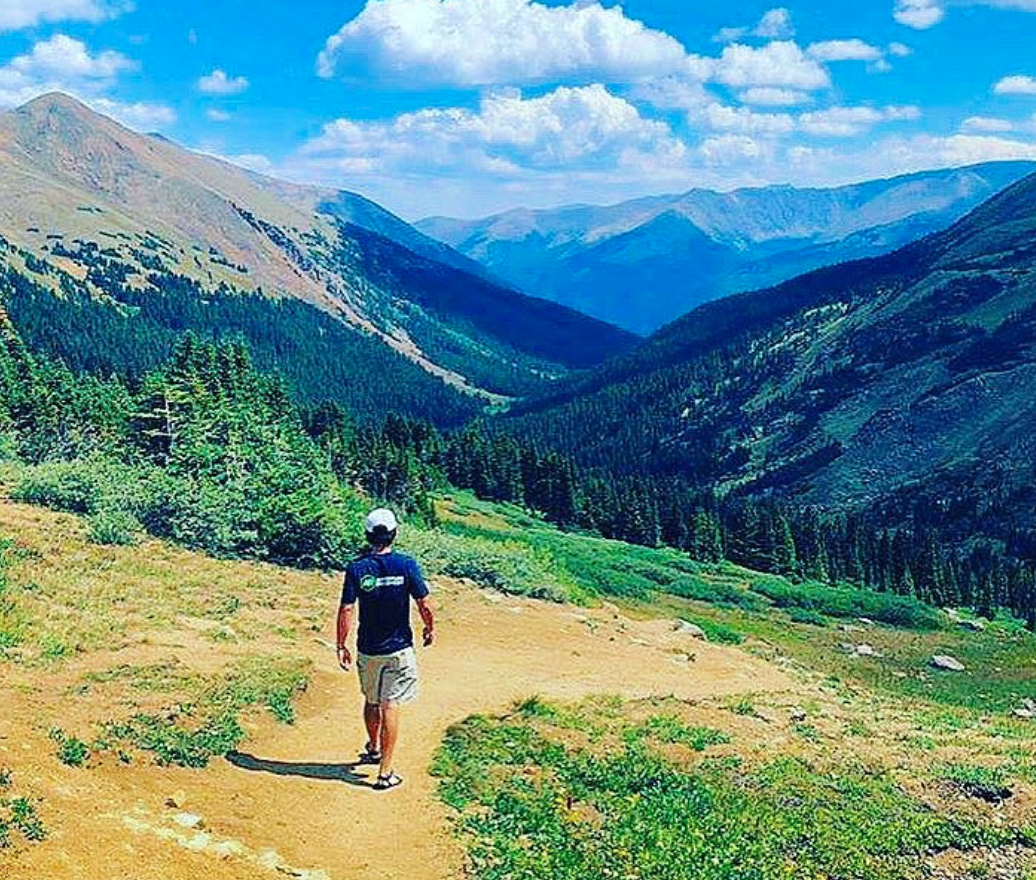Therapy, Outside
Therapy isn’t always easy. It’s hard enough to decide it’s time to ask for help, let alone find a therapist. For some, it’s even harder to sit in a quiet room and divulge their innermost experiences and thoughts. Further, finding a clinician with like-minded views and approaches to well-being can be another hurdle we navigate when we make the decision to seek mental health support. On top of this, if we’re discharging from inpatient or outpatient, finding consistent, ongoing support in the ways we seek may be a challenge.
Research now reveals the more nuanced intricacies between what we’ve traditionally delineated as physical health and mental health. We have learned that we need more than just cerebral attention in therapy and more than just mechanical movement with exercise. Part of our brain, according to science, is not just in our head, it’s also in our gut. Body and mind are not separate. One affects the other, and in fact, the dichotomy itself is arbitrary. It is on the heels of this multi-faceted awareness that a new approach evolved: therapy, outside.
Why Nature
When we intentionally spend time outdoors, in natural settings, we initiate multiple avenues of well-being. Exercise invigorates and releases happy hormones and neurotransmitters that benefit our physiology and psychology, elevating our state of being. What’s more, the immune system can also be positively influenced, according to recent research. The evidence reflects that when regularly immersed in activities outside, mood is improved, and general disposition is uplifted. We feel better, period. And this makes sense. We’re all familiar with how it feels to walk into the ocean, or how a pine forest smells after the rain. Profound presence takes hold.
The benefits are multiplied when we are forging new connections with others. Together, we learn new tools, challenge ourselves, and one another, and develop self-efficacy and deeper awareness. We build confidence and community as well. This is powerful and appealing since learning outdoor adventure skills ensures consistent and sustainable results that one can apply daily. Nature is a profound context that is gaining ground as scientists expand their understanding of how we are affected by time outside.
"Despite the abundance of research demonstrating the beneficial effects that nature has on our cognitive, emotional, spiritual, and physical wellbeing, nature-based interventions are understudied and underutilized as a mental health strategy. This is surprising, given that research suggests interventions connecting people with nature could bring a plethora of positive changes across multiple domains of functioning"—Capaldi, C., Passmore, H.-A., Nisbet, E., Zelenski, J., & Dopko, R. (2015). Flourishing in Nature: A review of the benefits of connecting with nature and its application as a wellbeing intervention. International Journal of Wellbeing, 5(4), 1–16
What Is Adventure Recovery Therapy?
Traditionally, therapy is defined as: mental healthcare services provided on an outpatient basis, while the patient is still engaging in their normal, day-to-day life. There are many kinds of therapy practiced today: Somatic therapy, Cognitive Behavioral Therapy, EMDR, Dialectical Behavioral Therapy, family systems therapy, and the list goes on. Most of these approaches take place in an office or a home-like setting, indoors, on a couch. These clinical practices can be highly transformative and are life-altering for many.
Nature-based therapy is similar in that one can engage while still in the daily flow of home life and communication is at the core. In addition, this approach may be especially appealing to those who struggle with traditional talk therapy. This is because one can move their bodies, discuss what’s happening, process in real time, and immerse in the outside world through the container of a supportive therapeutic relationship. The benefits are magnified by the attention to environment and healing found in nature. Trained clinicians can utilize intentional time outside to work with clients in a dynamic way.
Therapy Outside: Evidence-Based Practice
Nurture in Nature
Where we spend time, who we spend it with, and how we fill our days can influence and determine our mental and physical well-being. There are some basic elements that go into a healthy lifestyle, and these are habits that just work. They feel good, and we feel the results, often very soon after engaging. Exercise, rest, connection, self-care, facing challenges, enacting personal responsibility, asking for help—all these factors impact our well-being. We’ve learned that exercise is vital for our health—both physical and mental. In addition, relationships play a significant role and studies show that social connection can help prevent a sedentary lifestyle and depression.
Time in nature has many positive benefits as well and serves as a perfect backdrop to learn and apply new behaviors. The research reveals that time in the wilderness has a favorable impact on mood and disposition, brain function and cognition, and can boost our immunity. In addition, there are multiple evidence-based reasons cited in scientific studies as to why nature and adventure serve mental health. Adventure in nature can be utilized as a prevention tool for dangerous high-risk behaviors, and studies show greenspaces can positively affect substance use disorder. Some factors contributing to the outcomes include diminished stress, greater capacity for healthy relationship building, and self-awareness. These factors are significant when it comes to addiction and mental health care. Hence, clinical adventure encompasses the best of modern therapeutic approaches with nature-based teachings in a setting that is profoundly beneficial, according to the research.
Learning Healthy Habits, Outside
The research shows that when we feel a sense of community and purpose, we tend to bounce back from setbacks, with deeper resilience and emotional stability overall. Therapeutic intention in the outdoors kickstarts healthful habits in real time.
Applying evidence-based therapeutic modalities outside takes the model to the next level. Adventure therapy can have a powerful effect on mental health and substance use disorder clients, as can getting out of more traditional clinical, medical, or institutional environments. There are challenges to being removed from daily life to attend treatment to consider, especially upon re-entry from treatment or inpatient care. When we are trying to learn new, healthful habits it can feel easy to apply when we’re in a new place. But, applying the positive patterns in the same environment where we developed toxic, destructive behaviors is a whole other story.
Adventure Aftercare
What happens when we return home from a residential treatment program, and we’re faced with the same stressors that existed before we went into treatment? And how do we maintain the positive habits we acquired while in the treatment environment? These are the important questions we set out to answer.
Many of us know this experience first-hand. We went away to treatment and upon returning home, we lose momentum, fall into old patterns, or fall off the path. Perhaps we’re triggered or we are influenced by unhealthy peers or family members. We may end up back in an abusive situation or feel unable to change. Or we may not feel confident to face the world or engage in activities outside. So, what do we need? Support, guidance, connection—these are all key. And, for many of us, sitting in a group setting helps, but we need more—we need to move our bodies, breathe fresh air, develop self-efficacy, and create new patterns.
Adventure as a Way of Life
Time outside is an impactful intervention, and the goal is to learn how to apply an adventure mindset to our daily lives. Immersive time outdoors can be a huge part of healthy lifestyle and habit patterns. It informs one’s perspective and becomes a guide. To sustain the healing power of the tools we cultivate outside; we have to be consistent. When we learn new ways to care for ourselves, develop relationships with like-minded individuals, and feel motivated each day, it is far easier to create lasting change. This is how we find healing—in the ongoing community striving towards the same goal of adventure. At the end of the day, it’s the joy we experience outside, together, that keeps us coming back.



